The 7 Best Things to Do in Córdoba, Spain
Córdoba is the historical capital of the region to which it gives its name, the seat of power of the Muslim rulers who built the city’s famous mosque, since converted into a Christian cathedral.
The rich and varied history of the city of Córdoba has endowed it with an extraordinary and unique heritage, from the millennia-old Roman engineering of the bridge across the river, to the flower festivals that bloom and fade over a period of a few days.
There’s also an amazing mix of influences from the Jewish populations and their ancient quarters, sitting side-by-side with the palatial Alcázar de los Reyes Cristianos.
There are so many things to do in Córdoba, Spain, and so much to see, that I’ve put together a short list of the must-do’s to help you decide how to spend your time in the city.
Are you ready?
Then let’s get into it.
The 7 Best Things to Do in Córdoba, Spain
1. Visit the Mezquita
Begun in 784 CE, the Great Mosque of Córdoba was extended through the 9th and 10th centuries until it became the largest holy building in the entire Muslim world.
It remains the third largest Mosque of the ancient world, even today!
If you’re up to the challenge, grab a ticket for a tour of the bell tower. It is the equivalent of climbing a 12-storey building, but the views from the top make it one of the most iconic things to do in Córdoba.
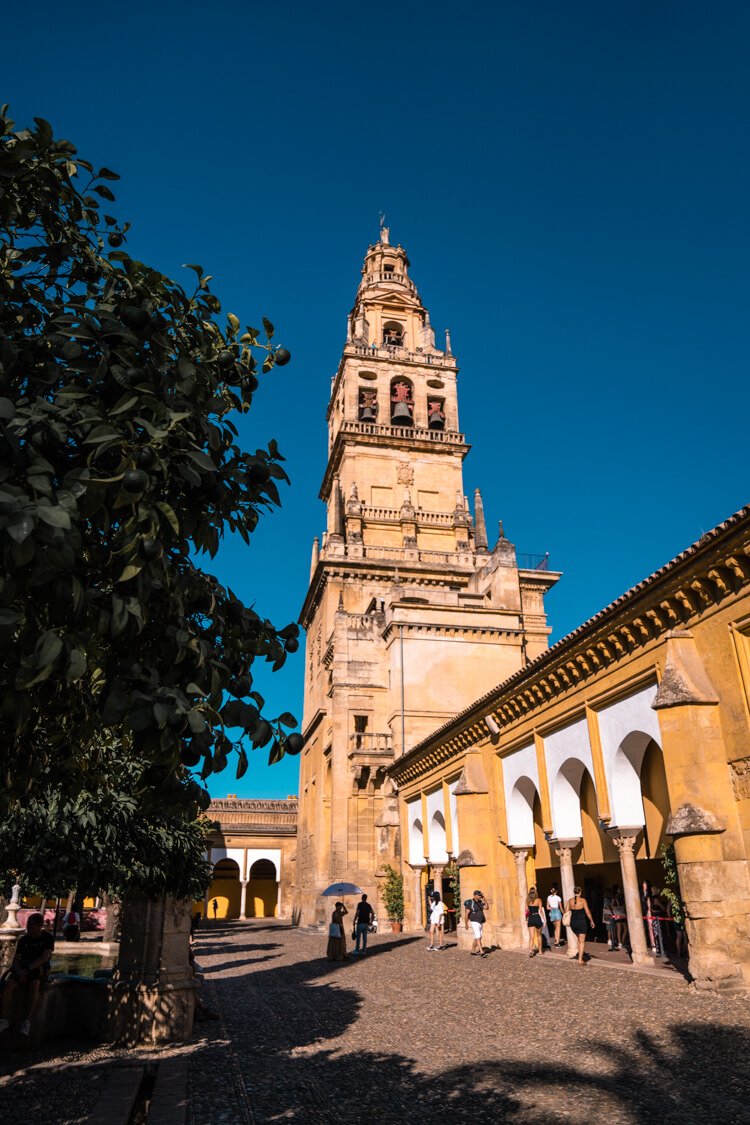
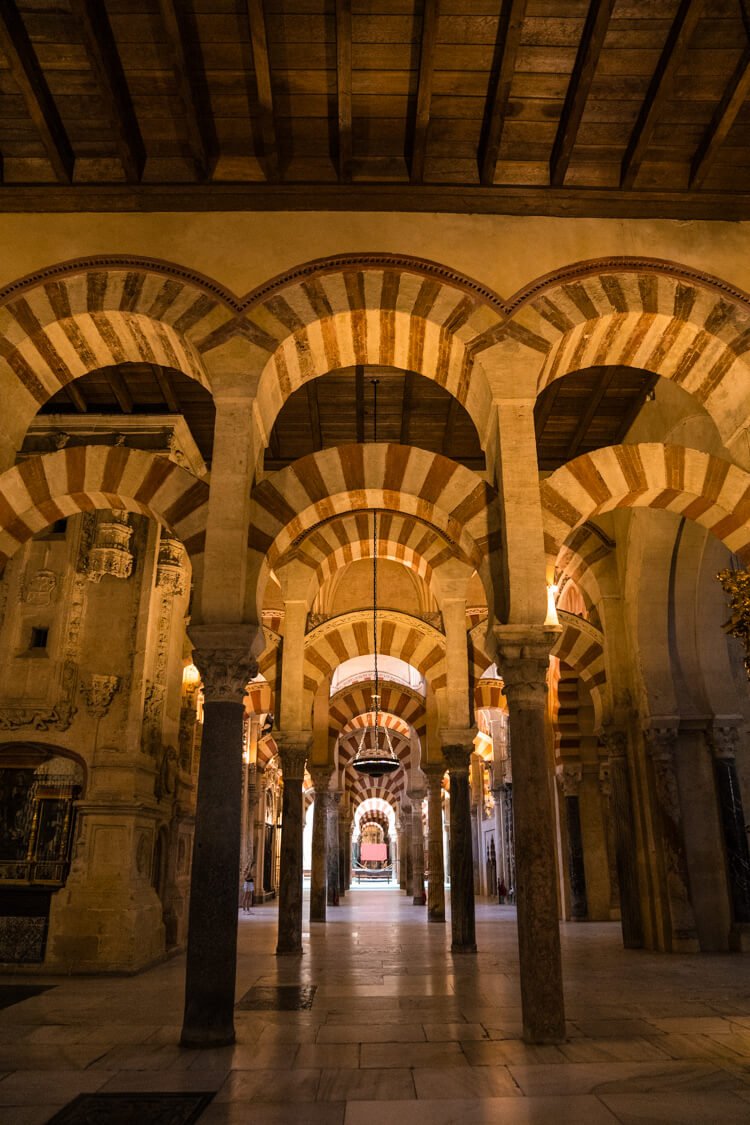
Good to know
- The tickets are not available in advance so get to the ticket office in the Patio de los Naranjos early to get your favoured time slot.
- It’s free to visit the main cathedral early in the morning (before the 9:30am mass), as access to religious services is not charged. The last admission is 30 minutes before the doors are closed at six in the evening.
- You can also visit with a professional guide, who will take you on a tour of the mosque and explain its fascinating history to you.
- As an alternative, there is a night tour called the ‘Soul of Córdoba.’ This tour starts in a gallery across the street, where a brief history of the Mezquita is shared via panels and a video presentation. Once in the building, the light levels are kept deliberately low to highlight the areas on the audio tour. This is not to be missed if ancient Islamic architecture really grabs you!
2. Walk across the Roman Bridge
Begun by the Romans in the first century BCE, the stunning 16-arch bridge across the Guadalquivir River has been pivotal to trade, defence, and political power in the region since it was first built.
In the 12th century, the ruling caliphate built the Torre de la Calahorra, a defensive tower to protect the bridge and keep a lookout.
Three hundred years later another structure, the Gate of the Bridge, was built to further shore up protection for both the bridge and the city.
If you are a Game of Thrones fan you might recognise it from season 5, when it was used as the location for the ‘Long Bridge of Volantis.’
At over 800 feet in length, it’s certainly a way to get some steps into your daily count!
A lovely way to experience the Roman Bridge is by taking a stroll at sunset, as the city lights bathe the stone in gold.
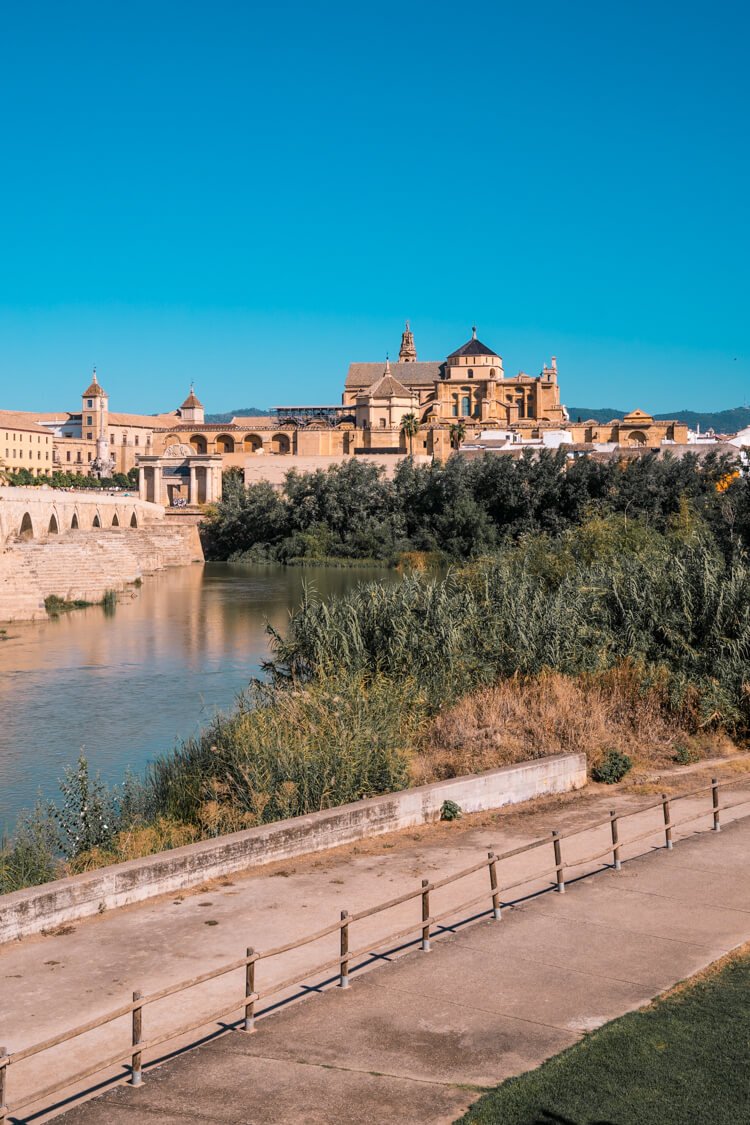
3. Explore the Alcázar de los Reyes Cristianos
The Alcázar de los Reyes Cristianos was built under orders from King Alfonso 11th of Castile in 1328 as a military and royal building.
This was a centre of power in Córdoba, but as with many buildings in the city, the foundations are Roman, and many of the walls date from the caliphate.
It’s a building that can leave no one in any doubt that the Reconquista (the driving out of the caliphate), was meant to be permanent.
Its architecture is certainly formidable, with its towers that command extensive views across all quarters of the city.
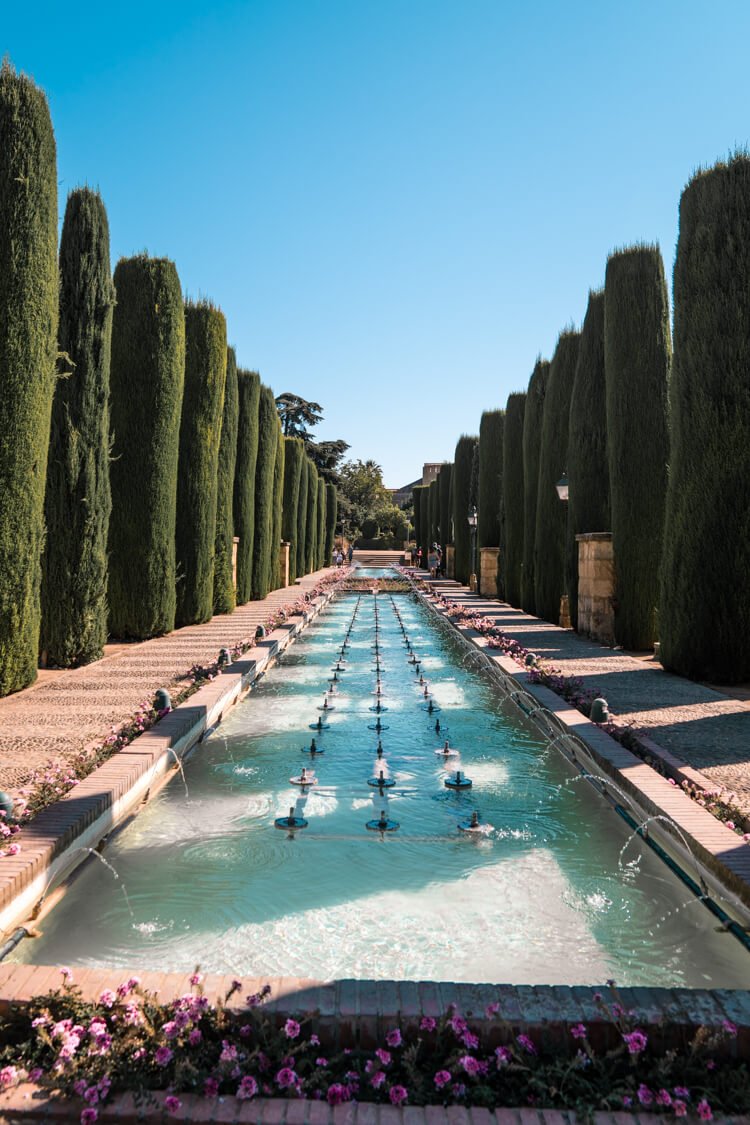
The exterior of the palace gives little clue to the opulence and elegance of the interior, or of the gardens, which are perhaps the most exquisite feature.
The palace has a long and bloody history. The Spanish Inquisition used it as a headquarters for nearly three centuries, and it was the main garrison for the final assault on Granada and the Alhambra, the last Islamic holdout on the Iberian Peninsula.
Tickets and tours are available, and on public holidays entry to the museum is free after 6 pm.
4. Lose Yourself in the Jewish Quarter (Judería)
It might be hard to believe, but Córdoba is home to one of only three synagogues in the whole of Spain!
This is the terrible legacy of the Spanish Inquisition that allowed no religious observance other than Catholic.
There has been a population of Jewish people in Córdoba in Roman times, through the occupation by Visigoths, and under the caliphate too.
The Judería dates mainly from the tenth to the fifteenth century, and today it is one of the most picturesque areas of Córdoba, with its narrow streets and whitewashed buildings.
It’s also a popular area for boutique accommodation, as it is well-connected to all areas of the city.
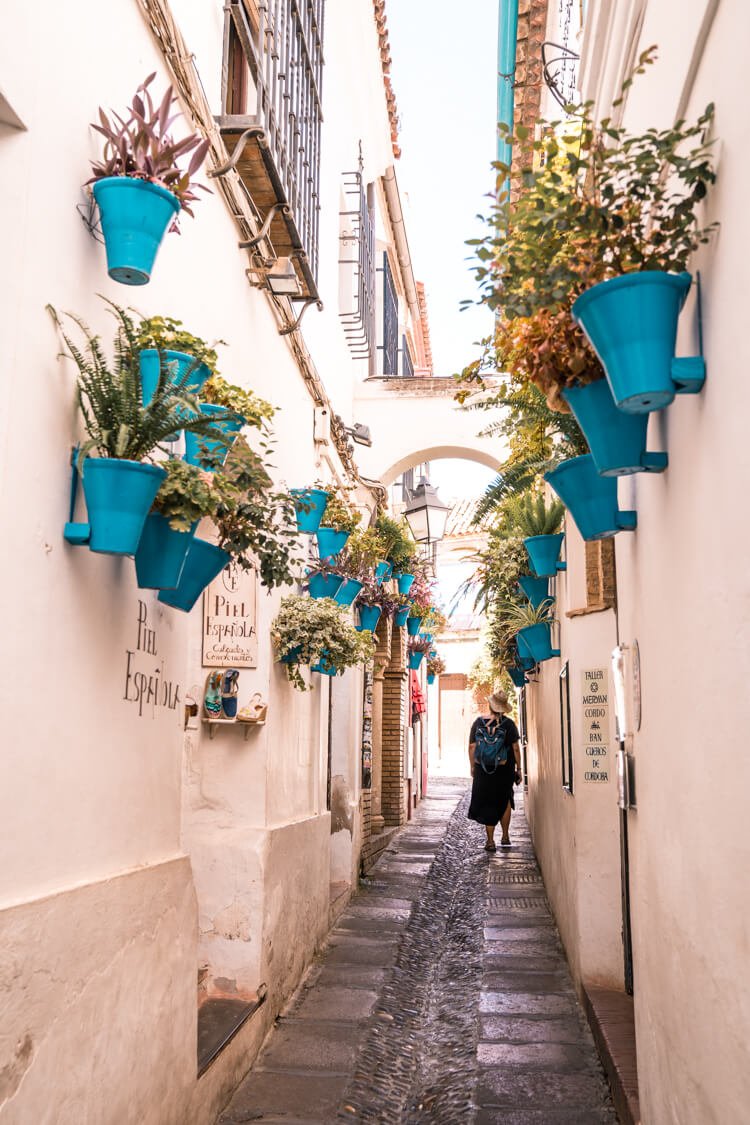
The best way to really enjoy and get to grips with the deep history of the Judería is to take a walking tour with a local expert guide.
This tour is the highest-rated Judería on GetYourGuide and combines the Jewish Quarter with the Alcázar de los Reyes Cristianos and the Great Mosque of Córdoba.
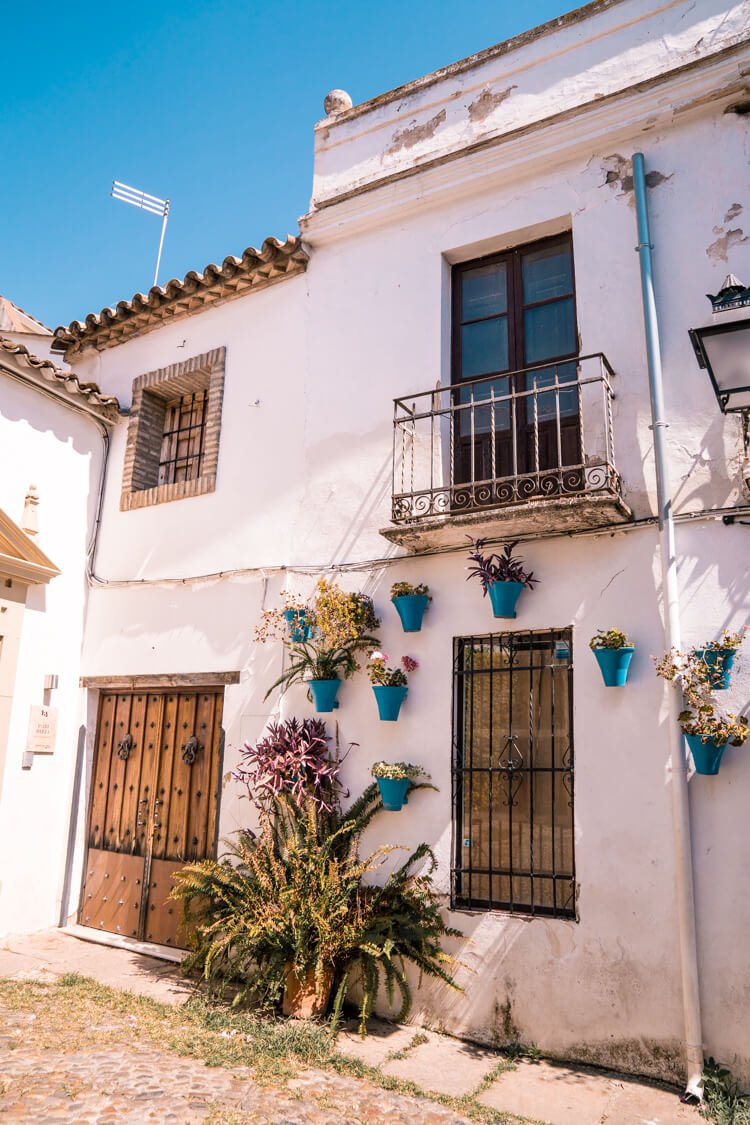
5. Visit Medina Azahara
A thousand years ago, the Caliphate employed its brightest and best architects, planners, and engineers to create a state-of-the-art new city complete with canals, drainage, roads, and other public utilities.
One hundred years later it lay in ruins, a result of a brutal local civil war. It was lost and forgotten.
Nine hundred years after that, it was rediscovered and excavated, and today you can take a guided tour of this urban wonder, preserved as a snapshot of what city life was like a millennia ago.
Unlike Córdoba, which was settled and built and rebuilt upon for centuries, Medina Azahara has no other roots, foundations, or influences other than the Umayyad Islamic civilization.
There are several tours available, including a magical two-hour night visit, all of which will deliver deep insights into the culture and heritage of the Al-Andalus empire and its cultural impact on the Spanish peninsula.
6. Discover the local cuisine
As with many Spanish cities, Córdoba has its own local specialties that it would be a shame to miss.
Make like a local and go bar-hopping, trying tapas at as many different bars as you can fit in. It’s a local tradition, to ‘tapear!’
I actually wrote about Andalucian cuisine in my post about what to eat in Malaga, but a must-try dish in Córdoba is salmorejo, a cold soup that looks like its more famous cousin, gazpacho, but has a much thicker texture.
Salmorejo is made from tomatoes, bread, garlic, olive oil, and a hint of vinegar, and garnished with a hard-boiled egg and Jamón Serrano for added flavour.
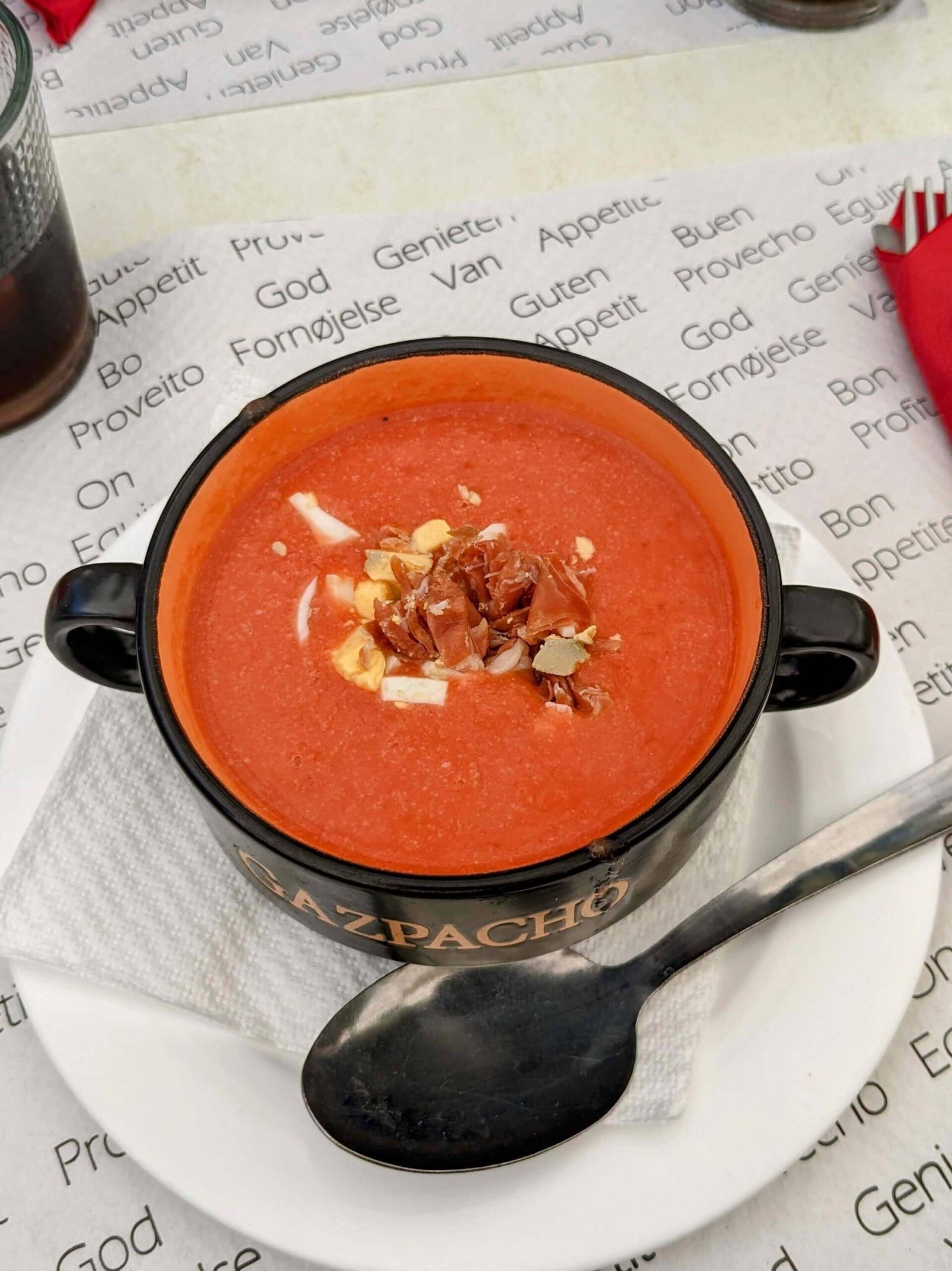
Flamenquin is another local favourite and is a deep-fried slice of serrano ham wrapped in pork and dipped in breadcrumbs. Served with fries and mayo, it will keep you going to the next stop!
For those with a sweet tooth, order up a dish of berenjenas con miel (eggplant with honey), or a pastel cordobés, a pastry laced with angel’s hair, pumpkin jam, and sprinkled with crushed almonds.
7. Attend the Festival of the Patios (if you’re lucky!)
For the first two weeks May, the courtyards of the city of Córdoba are thrown open to the public to celebrate the new blooms of geranium, jasmine, and carnations, and the city comes alive with flamenco, live music, art exhibitions, and generous hospitality.
On the first day of May, there is a procession called the Battle of the Flowers, with carts and floats bedecked with blooms crowding through the streets of Córdoba.
The festival is listed by UNESCO as an example of Intangible Cultural Heritage for its community-based celebration of cooperation and close-knit living, openness, and hospitality.
Things to Do in Córdoba, Spain | Final Thoughts
Córdoba is so much more than just another city break in Spain.
To visit Córdoba is a journey in itself, through more than two thousand years of history and culture.
Traditions in Córdoba are strong and are worn with pride in the city, the food, the flowers, and the welcome extended to visitors.
You will almost definitely want to stay for longer than planned, so be sure to allocate a good few days for Córdoba on your Andalucian itinerary!
More Andalucia Guides
If you’re planning a visit to Andalucia, you may find my other Andalucia destination guides helpful!
17 Travel Tips for Malaga
24 Traditional Malaga Dishes You Have to Try
A Guide to Jaen
Guide to Ubeda and Baeza, the Renaissance Cities of Andalucia
10 Reasons to Visit Marbella
The Best Things to Do in Ronda
The Best Things to Do in Nerja
That’s all I’ve got for this article, but as always, if you have any questions then don’t hesitate to reach out in the comments section below!
Until next time,
XOXO
If you liked this article and would like to support my work, please click the button above to donate a couple of bucks and buy me a coffee. The ad revenue that I receive on this website is minimal, so support from my readers enables me to keep creating content that you (hopefully!) love to read.
Disclaimer: This page contains affiliate links. If you make a purchase on a recommended site, I may earn a commission at no extra cost to you.

